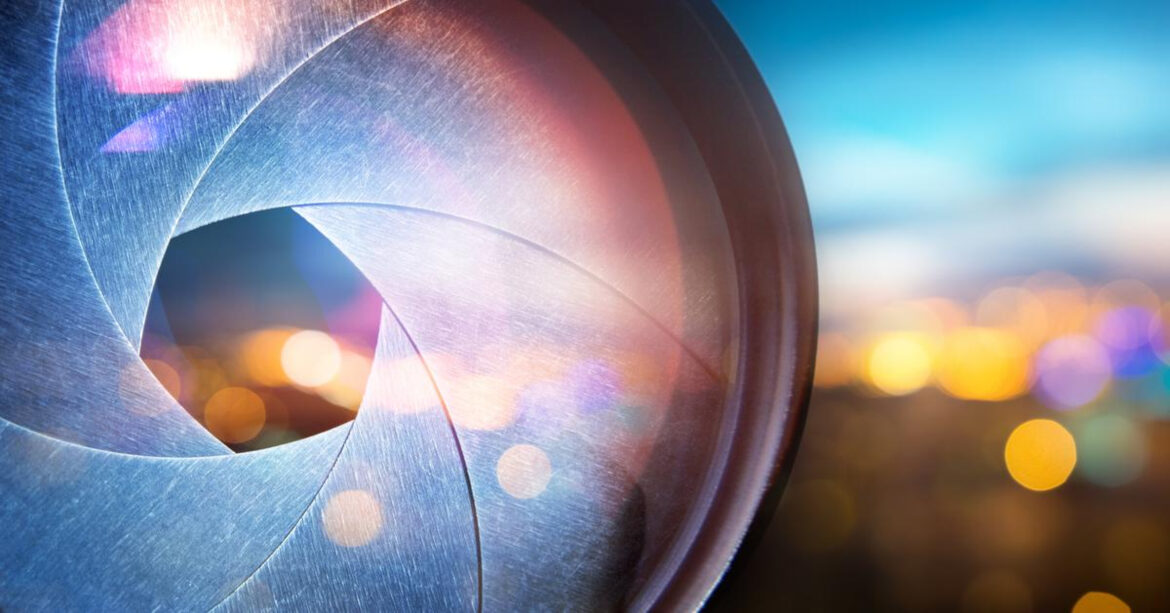Table of Contents
What is F-Stop on a Camera | Aperture Secrets for Stunning Photos!
Photography is an art form that requires technical knowledge and skill, and one of the fundamental concepts that every photographer needs to understand is the F-stop on a camera. The F-stop plays a crucial role in determining the exposure and depth of field in a photograph. In this article, we will explore the essence of F-stop, its relationship with aperture, and its application in photography.
The Essence of F-Stop on a Camera
Concept of F-Stop in Photography
F-stop, also known as focal ratio or f-number, is a numerical scale that represents the size of the aperture opening in a camera lens. It is denoted by the letter “f” followed by a number, such as f/2.8 or f/16. The F-stop is a measurement of the lens’s ability to transmit light and control depth of field, which is the range of sharpness in a photograph from foreground to background.
Aperture: Why it is a Key Component?
The aperture is a critical component in photography that controls the amount of light that enters the camera. It is an opening in the lens that can be adjusted to allow more or less light to reach the image sensor. The size of the aperture is directly linked to the F-stop number, where a smaller F-stop number corresponds to a larger aperture and vice versa.
Understanding F-Stops in Photography

| F-Stop | Aperture Diameter | Light Intake | Depth of Field |
|---|---|---|---|
| f/1.4 | Wide open | High | Shallow |
| f/2.8 | Larger | High | Shallow |
| f/5.6 | Moderate | Moderate | Moderate |
| f/8 | Smaller | Moderate | Moderate |
| f/16 | Small | Low | Deep |
| f/22 | Very small | Low | Deep |
This table illustrates how different f-stop values affect the aperture diameter, light intake, and depth of field in photography. Lower f-stop values result in wider apertures, more light intake, and shallower depth of field, while higher f-stop values result in smaller apertures, less light intake, and deeper depth of field.
Distinguishing Between Aperture and F-Stop
The Line Between F-Stop and Aperture Size
Although F-stop and aperture are closely related, it’s important to understand that they are not the same thing. Aperture refers to the physical opening in the lens, while F-stop is a measurement of the size of that aperture. The relationship between the F-stop number and the aperture size is inverse, meaning that a smaller F-stop number corresponds to a larger aperture and more light entering the camera.
Role of the Lens in Aperture and F-Stop
The lens of a camera plays a significant role in determining the aperture and F-stop capabilities. Different lenses have different maximum apertures, which refer to the widest opening the lens can achieve. Lenses with a larger maximum aperture, such as f/1.4 or f/2.8, are often preferred by photographers for their ability to gather more light, allowing for faster shutter speeds and better low-light performance.
Impacting Depth of Field Using F-Stops

How F-Stop Determines Depth of Field
The concept of depth of field refers to how much of a photograph appears in sharp focus. The F-stop plays a crucial role in determining the depth of field. A larger F-stop number (e.g., f/16) results in a smaller aperture opening, which increases the depth of field. On the other hand, a smaller F-stop number (e.g., f/2.8) creates a larger aperture opening, resulting in a shallower depth of field.
The Effect of Using Larger and Smaller F-Stops
When using larger F-stops, such as f/16 or f/22, more elements in the scene will be in focus, resulting in a greater depth of field. This is ideal for landscape photography or when capturing a scene with many subjects at varying distances. Conversely, using smaller F-stops, like f/2.8 or f/4, creates a shallower depth of field, isolating the subject from the background and creating a more dramatic, blurry background effect. This technique is often used in portrait and macro photography to draw attention to the main subject.
F-Stops’ Crucial Role in Photography

F-Stops for Beginner Photographers
For beginner photographers, understanding and utilizing F-stops correctly can greatly improve their photography skills. Experimenting with different F-stop values allows beginners to see the impact it has on the resulting images, enabling them to discover their preferred depth of field and creative possibilities.
Professional Photographers: Use of Higher F-Stops
Professional photographers often rely on higher F-stops, such as f/8 or f/11, to ensure a wider depth of field. This is especially important in genres like landscape photography, where capturing the details throughout the image is essential. The use of higher F-stops allows professional photographers to maintain sharpness from the foreground to the background.
Modifying F-Stops on Your Digital Camera

Guidelines to Change Your F-Stop
Modifying the F-stop on a digital camera is a simple process. Most cameras have a mode dial that allows you to select the desired F-stop value. In manual or aperture priority mode, you can directly change the F-stop by rotating a dial or using the camera’s control buttons. Familiarize yourself with your camera’s user manual to understand the specific steps for modifying the F-stop.
Effects of Changing the F-Stop
Changing the F-stop on your camera has a direct effect on the exposure and depth of field of your photographs. A larger F-stop number reduces the amount of light entering the camera, resulting in a darker image. Conversely, a smaller F-stop number allows more light to reach the sensor, resulting in a brighter image. Additionally, modifying the F-stop affects the overall sharpness and depth of field in your photographs.
The Significance of F-Stops in the Aperture

Understanding the Connection Between Aperture and F-Stop
Aperture and F-stop are interconnected, as the F-stop value determines the size of the aperture opening. The aperture size, measured in millimeters, refers to the diameter of the aperture opening. A larger aperture size corresponds to a smaller F-stop number, and vice versa. It’s important to note that each F-stop value represents a doubling or halving of the amount of light entering the camera.
Why is Aperture Size Important?
The size of the aperture directly impacts the amount of light that enters the camera and the resulting exposure. A larger aperture allows more light to pass through, which is beneficial in situations where there is less available light. On the other hand, a smaller aperture restricts the amount of light entering the camera, which is useful in bright conditions where you want to avoid overexposure and maintain proper exposure values.
Common Misconceptions about F-Stops
Debunking Myths about Changing the F-Stop
There are several common misconceptions about F-stops that often confuse beginners. One misconception is that changing the F-stop only affects the depth of field, when in reality, it also affects the exposure. Another misconception is that a higher F-stop number always results in a sharper image, when in fact, diffraction can decrease sharpness at very small apertures.
What Does ‘F’ Stands for in F-Stop?
The ‘F’ in F-stop stands for “focal length ratio.” The F-stop value is obtained by dividing the focal length of the lens by the diameter of the aperture. This ratio determines the amount of light that enters the camera and affects the depth of field in the resulting image.
Conclusion: Mastering the Control of F-Stop

Recap: Why F-Stop Matters in Photography
F-stop is a fundamental concept in photography that plays a crucial role in controlling the exposure and depth of field in an image. It allows photographers to adjust the amount of light that enters the camera and control the sharpness and focus range of their photographs. Understanding how F-stop works and how to modify it on your camera can greatly enhance your photography skills.
Final Tips on Utilizing F-Stop on a Camera
Here are a few final tips to make the most of F-stop on your camera:
- Experiment with different F-stop values to understand their impact on exposure and depth of field.
- Consider the desired depth of field when selecting an F-stop value.
- Use higher F-stops for capturing landscapes and maintaining sharpness throughout the image.
- Don’t be afraid to use smaller F-stops to create a shallow depth of field and separate your subject from the background.
- Take time to understand your camera’s F-stop options and how to modify them effectively.
By mastering the control of F-stop, you can take your photography skills to the next level and capture stunning images with precise control of exposure and depth of field.
FAQs on F-stop And Aperture
Q: What is f-stop on a camera?
A: F-stop refers to the aperture size of a camera lens. It determines the amount of light that enters the camera and impacts the depth of field in a photograph.
Q: Why is aperture important?
A: Aperture is important because it controls the amount of light that enters the camera and affects the depth of field in a photograph. It allows you to adjust the exposure and create various creative effects.
Q: How can I change my f-stop?
A: To change your f-stop, you need to adjust the aperture setting on your camera. This can usually be done through the camera’s menu or by using the control dial.
Q: What does f-stop stand for in photography?
A: F-stop stands for “focal ratio” or “focal length to aperture diameter ratio” in photography. It is a numerical representation of the aperture size.
Q: What does a higher f-stop mean?
A: A higher f-stop indicates a smaller aperture and less light entering the camera. It results in a larger depth of field and a sharper focus throughout the image.
Q: What does a larger f-stop mean?
A: A larger f-stop refers to a smaller aperture diameter on the camera lens. It lets in less light and increases the depth of field, resulting in a larger area in focus.
Q: How can I change my f-stop to achieve a desired effect?
A: To achieve a desired effect, you can change your f-stop by selecting a larger or smaller aperture. A smaller f-stop (wider aperture) lets in more light and creates a shallower depth of field, while a larger f-stop (narrower aperture) allows less light and increases depth of field.
Q: What is a full stop in f-stop?
A: A full stop in f-stop represents a doubling or halving of the amount of light entering the camera. It is usually expressed as a halving or doubling of the numerical f-stop value (e.g., f/2.8 to f/4 or f/4 to f/2.8).
Q: How does the aperture affect my photographs?
A: The aperture affects photographs by controlling the amount of light that enters the camera and determining the depth of field. It can create a blurry background (wide aperture) or sharp focus throughout the image (narrow aperture).
Q: What is the minimum and maximum aperture on a lens?
A: The minimum and maximum aperture on a lens represent the smallest and largest aperture values the lens can achieve. The minimum aperture is usually indicated by a higher f-stop number (e.g., f/16), while the maximum aperture is indicated by a lower f-stop number (e.g., f/2.8).


